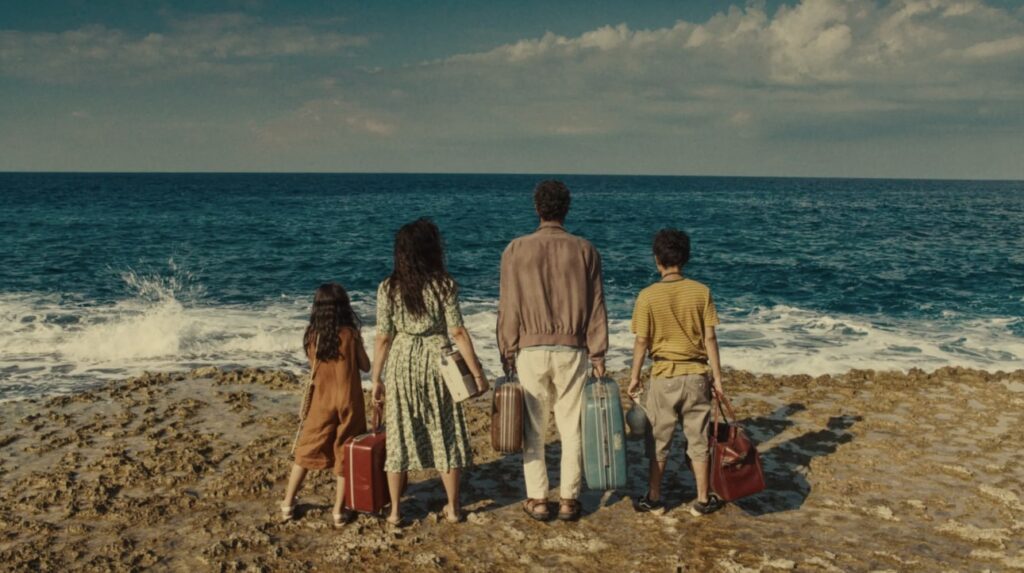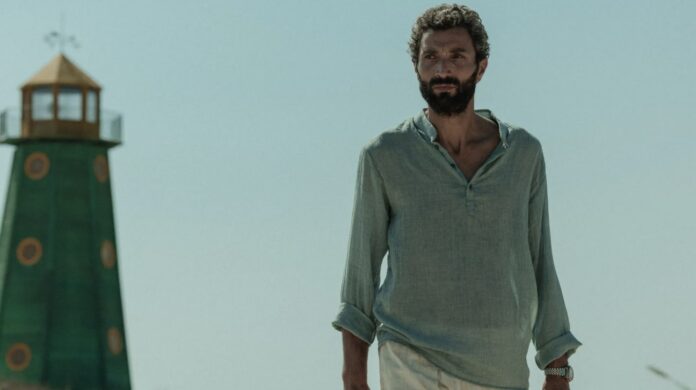‘The Sand Castle’ Breaks Netflix Records as Bold Migrant Drama Captivates UAE Audiences
The Sand Castle, a haunting migrant drama by U.S. director Matty Brown, has quietly made history on Netflix.
Without fanfare or glossy marketing campaigns, the Arabic-language film became the most-watched Arabic title on Netflix in the first half of 2025, clocking 10.8 million views and 17.4 million hours watched.

At a time when Arab cinema is craving global resonance, this deeply emotional and artistically daring film has resonated not only with international audiences, but also with sophisticated viewers in Abu Dhabi, Sharjah, Ras Al Khaimah, and beyond.
Set against the backdrop of a symbolic, sinking island, The Sand Castle uses childlike perception and poetic imagery to depict the trauma of forced displacement—earning comparisons to auteurs like Gondry and Iñárritu, and pushing the boundaries of what Arab arthouse cinema can achieve on a global stage.
A Quiet Revolution: The Rise of Arab Arthouse on Streaming
When Netflix released its What We Watched: A Netflix Engagement Report in July 2025, the industry buzz focused on English-language juggernauts like Back in Action. Yet, quietly nestled within the rankings was The Sand Castle, an Arabic-language arthouse film that defied expectations. Ranking 36th in non-English language films and 229th overall, its success surprised even its creators.
“This film is hard,” admits producer Mandy Ward. “It takes an extraordinary person to push it through the ranks.” That extraordinary person was Gianluca Chakra, CEO of Front Row Filmed Entertainment, who brought the film to Netflix following the success of Perfect Strangers. His deep ties to Arab cinema and platforms gave The Sand Castle the boost it needed—even in the absence of promotional support.
“Downplayed by many, it connected with millions globally,”
Chakra later posted.
“It’s a win for everyone pushing bold original Arab content.”
From Personal Pain to Cinematic Poetry
Brown’s decision to tackle the refugee crisis came from a deeply personal space. As a homeless child himself, the image of two-year-old Alan Kurdi’s lifeless body on a Turkish beach hit him viscerally.
“I had a pretty tumultuous childhood…
You have to lie, to build yourself a sort of fortress and live in your imagination to survive,”
Brown reflects
That fortress became The Sand Castle—told not from the adult gaze but through the mind of a young girl processing trauma. Flashbacks, surreal allegories, and fragmented memories interweave to form a psychological labyrinth that reflects the chaos and loss of war.
“It’s like an explosion in reverse,” says Brown.
“You’re in the fog, you don’t know where you are… and then slowly by the end it all becomes clear.”
UAE Talent and Regional Relevance
Brown’s vision was elevated by a remarkable regional cast.
Zain Al Rafeea, known for his breakout in Capernaum, plays the son, alongside his sister Riman Al Rafeea, and Nadine Labaki, who took on the role of the mother after mentoring Zain during Capernaum.
“Zain said, ‘Look, I don’t need to act. I’ve already lived this,’” recalls Brown.
The cast’s authenticity struck a chord across Ajman, Umm Al Quwain, and broader Arab territories. Their performances ground the film’s allegory in reality, a juxtaposition that fuels the story’s emotional punch.
Filmed on Palm Island off the coast of Tripoli, Lebanon, the shoot itself was a logistical challenge. The island, a protected nature reserve, demanded environmental responsibility and precise scheduling—fitting for a film that so poignantly deals with themes of impermanence and fragility.
“The saddest day on set was the day we had to tear down the lighthouse,”
Ward recalls
“Everybody sat there and cried.”
A Film Without Borders, and the Power of Streaming
In an era where digital streaming services dominate, The Sand Castle’s trajectory proves that bold, intimate Arab storytelling can break through the algorithm. Released quietly in January 2025, without major PR or press, the film still managed to become a global phenomenon.
This speaks volumes about both Netflix’s global reach and the audience’s hunger for authentic refugee narratives, particularly ones that avoid cliché. Brown’s artistic approach—subtle, dreamlike, and emotionally raw—offered an alternative to overt political dramatization.
Despite the return of U.S. President Donald Trump and his renewed crackdown on immigration, The Sand Castle rose above geopolitical anxieties to find its audience.
What It Means for the Future of Arab Cinema
The UAE’s cosmopolitan, culturally invested audiences have played a crucial role in The Sand Castle’s success. Its breakout viewership in Arabic-speaking regions, particularly among upscale Netflix users in Dubai, Sharjah, and Ras Al Khaimah, signals a demand for cinematic depth and originality.
As platforms increasingly search for diverse voices, this film sets a precedent. With Brown at the helm, and producers like Chakra and Ward backing him, Arabic-language films are no longer niche—they are global contenders.
“When we back the right stories, with the right intent, they travel,”
Chakra affirmed
The Sand Castle as a cultural landmark for Arabic cinema
The Sand Castle is more than just a film—it’s a cultural landmark for Arabic cinema and an emotional reckoning wrapped in allegorical beauty. For viewers across the UAE and beyond, it’s a reminder of how art can bridge trauma, transcend borders, and connect strangers through shared empathy. Don’t miss it—stream it now on Netflix.



